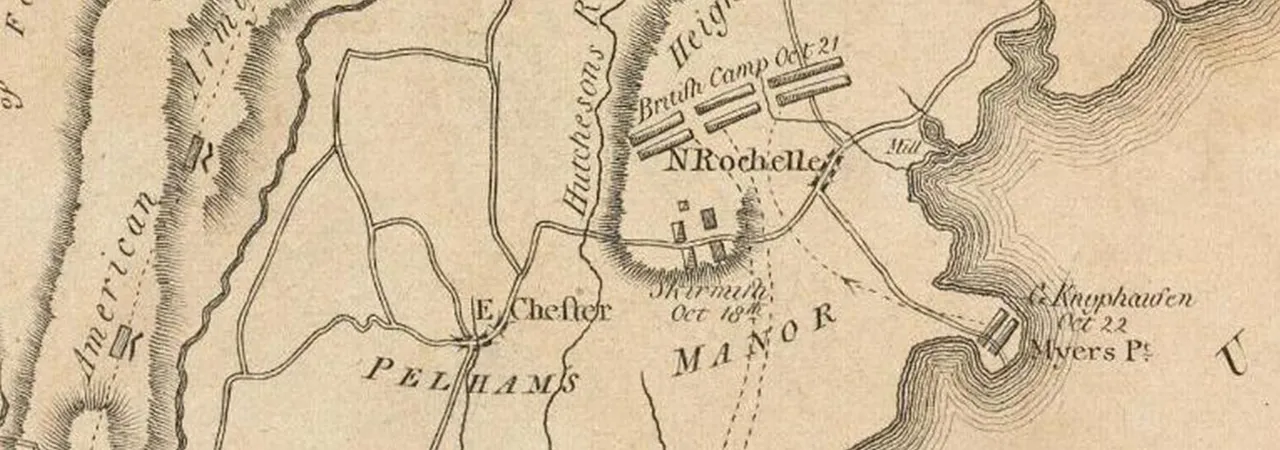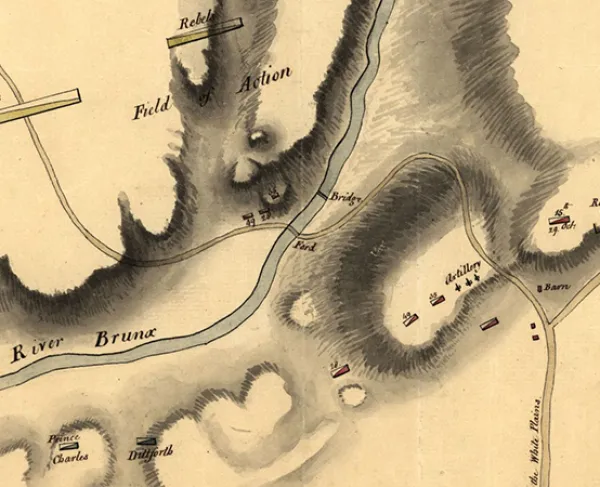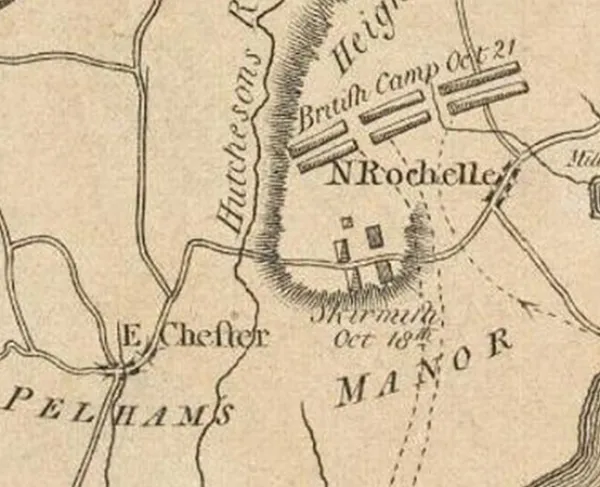
Pell's Point
Pelham
New York | Oct 18, 1776
The Battle of Pell’s Point stands as one in a series of engagements in the New York campaign between August and October of 1776. British forces defeated the Patriots in consecutive battles in Brooklyn and Manhattan. Yet, the Continental Army avoided being completely destroyed by timing their retreats and taking advantage of the British reluctance to advance. By October 1776, British General William Howe was planning to pin down Washington’s men at Harlem Heights, New York.
In the early morning hours of October 12, 1776, eighty barges transporting British troops emerged from a dense fog hovering above the waters of Long Island Sound. As the barges landed, a frigate offshore rained down canon fire on Manhattan’s Throg’s Neck peninsula. British General William Howe had launched his amphibious attack on New York.
Howe hoped to surround and trap the main portion of the Continental army and its commander-in-chief, George Washington, on the island. Only twenty-five Patriot soldiers under Pennsylvania Colonel Edward Hand stood ready to meet Howe’s force of 4,000 troops, mostly Hessians, as they disembarked at Throg’s Neck. Hand’s men moved quickly, burning the bridge over the peninsula’s small creek and positioning themselves behind a woodpile. From this vantage point, American riflemen picked off Redcoats funneling into a bottleneck and successfully held off a vast army until reinforcements arrived. Howe ultimately ordered a retreat instead of continuing to attack. The British camped on the island for three nights, affording Washington extra time to reform and prepare.
Howe’s men disembarked, landing again at a spot three miles north of Throg’s Neck called Pell’s Point (now Pelham Bay Park). Upon the British invasion, Continental commander John Glover positioned his force of 750 soldiers, made up mostly of Massachusetts men, in a staggered position behind the natural stone wall formations littering the landscape. As the Redcoats advanced, Patriot riflemen rose, fired, and retreated behind the next wall. The Redcoats charged ahead believing they held the advantage, only to face fire at point-blank range from a concealed second column of Patriots behind every wall. Although not an outright American victory, the tactics employed by the Patriots at the Battle of Pell’s Point successfully delayed the British invasion, inflicted heavy losses on the British, and bought Washington time.
After the engagement, Washington, at the insistence of General Charles Lee, his second in command, moved his force to White Plains, which saved the army from the next wave of the British amphibious assault, but did not prevent them from suffering a loss at the subsequent Battle of White Plains on October 28, 1776.
Pell's Point: Featured Resources
All battles of the New York and New Jersey Campaign
Related Battles
750
4,000
21
244












